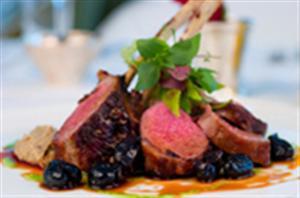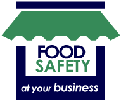Pay some attention to iron in the diet
Iron is one of the minerals essential for the growth of most living things.Its most important role is as a component of the haemoglobin molecules which carry oxygen around the body. Iron is also required for vital proteins such as cytochromes, enzymes and neurotransmitters and it is needed for the proper functioning of the immune system to fight infections.
iron deficiency is one of the most common nutritional deficiencies in adults. if the levels of iron are too low people become anaemic, which makes them tired, affects their ability to concentrate and makes them more prone to infection. People can develop iron deficiency when their oral intake is low, if they have high blood losses (eg injury, heavy menstruation, cancer, surgery) and if they cannot absorb iron properly (eg in coeliac disease or if stomach acidity is reduced). Vegetarians, young children, menstruating, pregnant and breastfeeding women and older people are especially vulnerable to iron deficiency.
The best sources of iron are from animal foods. This iron is called haem iron and is absorbed very efficiently by the body. Haem iron is found in beef, lamb, pork, chicken and fish. The redder the meat, the higher it is in iron.

Iron from plant sources is called non-haem iron and it is much more difficult for the body to absorb. It is more easily affected by food components such as phytates and polyphenols that interfere with the iron absorption, making some foods a poorer source of iron than their iron content would suggest. This type of non-haem iron is found in cereals (particularly iron fortified cereals) and breads (particularly wholegrain and wholemeal varieties) in green leafy vegetables and in legumes (dried beans and peas, lentils), nuts and dried fruit.
Tea, coffee, unprocessed bran and various mineral, herbal and other medications can also interfere with the uptake of iron from these plant sources.
Vitamin C, which is found in fruits such as citrus fruits, berry fruits, tomatoes, capsicum, pineapple, paw paw, rockmelon and mango (and in juices made from these fruits) acts to increase the absorption of all iron from food.
If a person is iron deficient their body becomes more efficient at absorbing iron from all sources.
Your elderly residents are at risk of iron deficiency as a result of poor oral intake as well as blood loss and poor absorption caused by age and chronic disease. To improve the iron content of the diet a regular intake of foods which are high in haem iron and well absorbed is recommended, particularly red meat, as well as fortified breakfast cereals and whole grain or wholemeal breads. A fruit or juice high in vitamin C is recommended at each meal. A resident with iron deficiency anaemia is advised to have tea and coffee between meals instead of with meals, avoid unprocessed bran also, if possible, avoid medications that interfere with iron absorption.
Article by Christine Borthwick 0418 437 291
function checkWholeForm(theForm) { var why = ""; if (theForm.EmailAddress) if (theForm.EmailAddress.value.length > 0) why += checkEmail(theForm.EmailAddress.value); if (theForm.CaptchaV2) why += isEmpty(theForm.CaptchaV2.value, "Enter Word Verification in box below"); if (why != "") { alert(why); return false; } return true; } //

